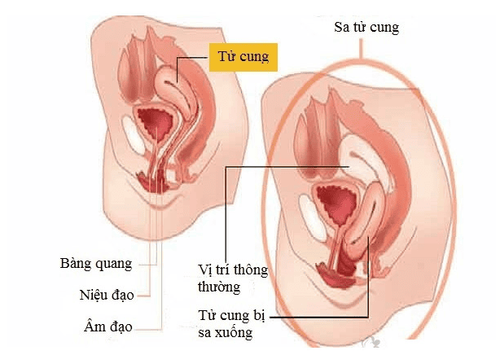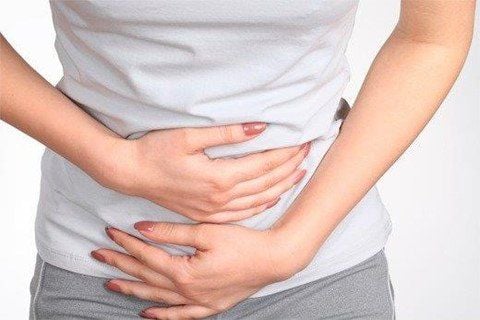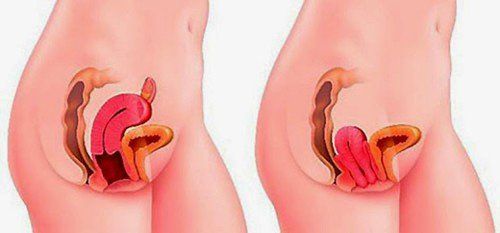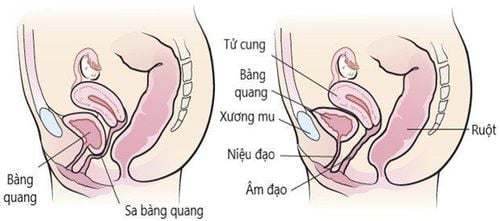This is an automatically translated article.
This article is professionally consulted by: Doctor Nguyen Chi Quang, Obstetrician and Gynecologist, Vinmec Central Park General Hospital. The doctor has many years of experience in the field of obstetrics and gynecology.Uterine prolapse is a common phenomenon in postpartum women, causing pain, difficulty urinating, and swelling of the uterus. The cause of uterine prolapse can be due to trauma of pregnant women, heavy labor, too large fetus.
1. What is postpartum uterine prolapse?
Uterine prolapse (also known as genital prolapse, uterine prolapse, vaginal wall prolapse) is a common phenomenon in women after childbirth, when the uterine wall drops into the vaginal canal, even some The uterus is exposed to the vagina. Uterine prolapse is caused by overstretching of the pelvic floor muscles and ligaments, making it impossible to support the uterus. Besides, pelvic stenosis is one of the skeletal abnormalities leading to uterine wall prolapse.
Manifestations of uterine prolapse are divided into many different levels. Mild symptoms are when the uterus prolapses but remains inside the vaginal canal. The most severe degree is that the entire uterus drops down and completely prolapses outside the vaginal opening.
2. Subjects prone to uterine wall prolapse
Uterine wall prolapse can occur in any woman, but this disease is more common in the following subjects:Postpartum women, especially women who give birth vaginally, pregnant women baby is too big or labor time is too long. Women often exercise, carry heavy loads after giving birth instead of resting and abstaining. This causes the bottom of the abdomen to contract a lot, causing damage and leading to uterine prolapse. Premenopausal women, older women, muscles and ligaments become weak, aging.

In addition, the following factors increase the risk of postpartum uterine prolapse in women:
Pregnancy with twins or multiples Advanced age The fetus is too large Pregnant woman has had many pregnancies Difficult delivery, leading to contractions Uterine ligation for too long Placental abnormalities Undergoing uterine surgery
3. Causes of uterine prolapse
Uterine prolapse can originate from the following basic causes:
Trauma to the pelvic floor muscles, the tissues that help support the uterus or cervix during childbirth, especially when pregnant women give birth too large or long labor. Pregnant women work too hard after giving birth, causing the muscles and ligaments to support the uterus to be damaged, while these organs have not fully recovered after birth, leading to the uterine wall falling. Birth defects in the uterus can also be the cause of uterine prolapse, such as a double-chambered uterus, abnormal neck and waist size, etc. Postpartum women have constipation or bowel disorders. , leading to increased intra-abdominal pressure and disease. Medical interventions during delivery: including laparoscopic surgery, cesarean section, manual placental abruption, or the use of oxytocin.

4. Manifestations of uterine prolapse
Uterine prolapse is manifested by dull abdominal pain in the uterine region, accompanied by signs of intra-abdominal bleeding, especially during pregnancy. However, uterine pain may not be specific enough or specific for a doctor to make an accurate diagnosis. Because in fact, the pregnant woman's body will often have pain in some places to adapt to pregnancy.Other symptoms of uterine prolapse include:
Fast heartbeat Low blood pressure (mild causes shock, strong can lead to cardiogenic shock) Stops uterine contractions Severe uterine pain Loss of sensation fetus in the womb Postpartum uterine prolapse is of more and more concern because of the inconvenience and impact of the disease on a woman's life. However, for delicate reasons, women are often afraid to go to the doctor and suffer silently. Meanwhile, if not detected and treated promptly, uterine prolapse can cause many dangerous complications.
Currently, there are many effective surgical treatment methods for genital prolapse. Depending on the extent of the examination, the doctor will prescribe medical or surgical intervention. At Vinmec International General Hospital, robotic laparoscopic surgery is the optimal method for any genital prolapse. With this method, the patient will have advantages such as non-recurrence of the disease, preservation of the uterus and resolution of accompanying urinary symptoms of the disease.
Da Vinci robot made in the USA is an advanced, sophisticated, modern robot with 4 arms that almost perfectly simulate human hand movements, meeting the needs of surgery with requirements. tallest. Thanks to this feature, surgical robots can penetrate narrow, deep and difficult to reach locations, solving the limitations of classical open and laparoscopic surgery. With outstanding advantages: Safety, minimizing the risk of complications and surgical infection, pain relief, less blood loss, quick recovery, ensuring aesthetics, the robot can be used for most surgeries. cases must be treated with endoscopic methods especially in cancer treatment.
Please dial HOTLINE for more information or register for an appointment HERE. Download MyVinmec app to make appointments faster and to manage your bookings easily.














